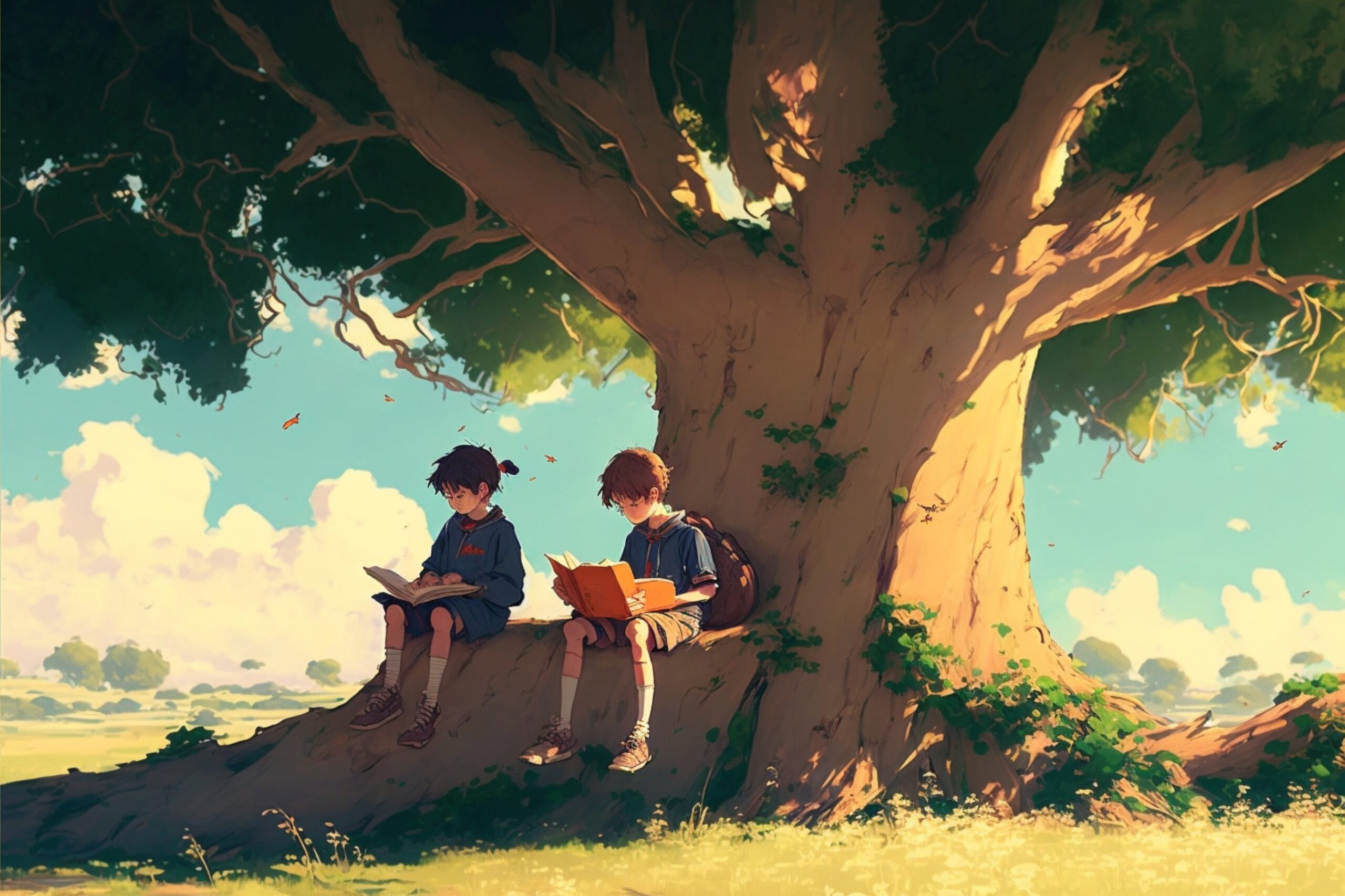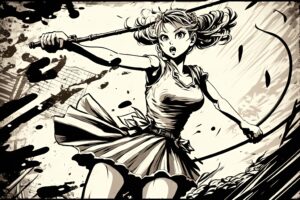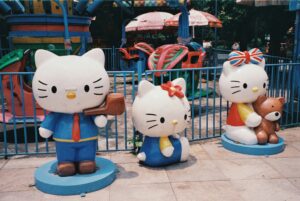Embarking on a journey through Japan with Studio Ghibli films is akin to stepping into a series of vibrant, animated canvases that bring the nation’s rich culture, history, and landscapes to life. Founded by Hayao Miyazaki and Isao Takahata, Studio Ghibli has captivated audiences around the world with its enchanting stories, complex characters, and breathtaking animation. Each film serves as a window into various aspects of Japanese life, from its bustling cities and serene countryside to its folklore and historical events. This article explores how Studio Ghibli films offer a magical tour of Japan, providing insights and inspiration for those yearning to explore the beauty and spirit of this unique country.
Embarking on a Magical Journey with Studio Ghibli
Studio Ghibli films are more than just animated features; they are heartfelt narratives that encapsulate the essence of Japan. Through their detailed depictions of settings and themes, these films provide a unique perspective on Japanese culture, nature, and traditions. For many fans globally, Ghibli movies are their first introduction to Japan, sparking curiosity and a desire to explore the real-life inspirations behind Miyazaki’s imaginative worlds. From the bustling streets of Tokyo to the serene landscapes of rural Japan, Ghibli films guide viewers on an enchanting journey across the country, revealing its beauty and complexities.
Spirited Away: Unveiling the Heart of Japan
"Spirited Away" is not just a story of a young girl navigating a world of spirits and gods; it is also a deep dive into Japan’s rich cultural heritage. The film’s setting, a bustling bathhouse for the gods, draws heavily from traditional Japanese architecture and Shinto beliefs. Viewers are transported to a world where every corner and creature is steeped in the country’s spiritual traditions. The film also touches on themes of environmentalism and the importance of respect for nature, which are deeply ingrained in Japanese culture. Chihiro’s journey is a metaphorical exploration of Japan’s heart, showcasing its values, traditions, and the perpetual balance between the modern world and ancient customs.
My Neighbor Totoro: A Glimpse into Rural Bliss
Set in the lush countryside of post-war Japan, "My Neighbor Totoro" offers a nostalgic view of rural life that is both idyllic and deeply connected to nature. The film’s portrayal of the Satomi family’s interactions with friendly forest spirits, including the iconic Totoro, highlights the harmonious relationship between humans and nature that is characteristic of many Japanese rural communities. This delightful tale not only brings the beauty of Japan’s countryside to the forefront but also reflects on simpler times, emphasizing the importance of family, community, and the natural world. For those longing to experience Japan’s pastoral landscapes, "My Neighbor Totoro" is a perfect starting point.
Princess Mononoke: Echoes of Japan’s Ancient Past
"Princess Mononoke" is a powerful narrative that delves into the conflicts between industrialization and nature, echoing the struggles of Japan’s ancient past. Set during the late Muromachi period, the film brings to life the historical tensions between the developing society of humans and the ancient gods of the forest. Its depiction of lush, untamed forests and the complex relationship between humans and the environment draws from Japanese history and Shinto beliefs, offering viewers a glimpse into the country’s deep reverence for nature. "Princess Mononoke" not only serves as an engaging tale of adventure and conflict but also as an invitation to explore Japan’s historical landscapes and ponder the enduring bond between its people and the natural world.
Howl’s Moving Castle: Wandering Through Time
While "Howl’s Moving Castle" may seem like a fantastical journey set in an imaginary land, its underlying themes and settings are deeply influenced by Japan’s cultural and historical context. The film’s portrayal of war and its impact on society reflect Japan’s own experiences, particularly those of the 20th century. The moving castle itself, a marvel of animation, symbolizes the fusion of the old and new, mirroring the coexistence of tradition and modernity in Japan. As viewers follow Sophie’s transformative journey, they are invited to explore themes of identity, loyalty, and the quest for peace, all of which resonate deeply with Japan’s historical narrative and contemporary challenges.
Kiki’s Delivery Service: Celebrating Independence
"Kiki’s Delivery Service" presents a heartwarming tale of a young witch finding her place in the world, set against the backdrop of a coastal city reminiscent of European and Japanese landscapes. This blend of influences showcases Japan’s openness to the outside world and its ability to embrace and integrate different cultures. The film’s emphasis on independence, self-discovery, and community support reflects the values that many Japanese hold dear. Kiki’s journey from uncertainty to self-assurance is a universal story of growth and independence, set in a world that captures the imagination and inspires viewers to explore beyond their boundaries.
The Secret World of Arrietty: Unseen Japan
Inspired by Mary Norton’s "The Borrowers," "The Secret World of Arrietty" offers a unique perspective on the unseen corners of Japanese homes and gardens. Through the eyes of the tiny borrower Arrietty, viewers are introduced to a world where the smallest details are imbued with beauty and significance. This focus on the minutiae of everyday life reflects the Japanese aesthetic of wabi-sabi, which finds beauty in imperfection and transience. The film’s lush, detailed animations of nature and domestic settings invite viewers to look closer at the world around them, revealing the magic hidden in the ordinary.
Porco Rosso: Soaring Over the Adriatic Sea
Though "Porco Rosso" is primarily set in the Adriatic Sea, its themes of adventure, romance, and the quest for identity resonate with the spirit of exploration that defines much of Japan’s history and culture. The film’s dashing hero, a pilot transformed into a pig, navigates a world of aerial dogfights and high seas escapades, reflecting the human hunger for adventure and meaning. "Porco Rosso" combines historical fiction with a fantastical twist, offering a departure from the traditionally Japanese settings of other Ghibli films while remaining grounded in the studio’s core themes of personal growth and resilience.
From Up on Poppy Hill: Nostalgia in Yokohama
"From Up on Poppy Hill" is a tender look back at Japan’s post-war era, set in the port city of Yokohama. The film captures the nation’s mood of recovery and rebirth during the 1960s, focusing on a group of teenagers seeking to preserve their historical clubhouse in the face of modernization. This struggle between the old and the new mirrors Japan’s broader challenges during a time of rapid economic growth and societal change. "From Up on Poppy Hill" offers a poignant exploration of history, memory, and the importance of preserving cultural heritage amidst the push towards the future.
Ponyo: Coastal Villages and Ocean Wonders
Set in a seaside village, "Ponyo" brings to life the magic and mystery of the ocean that surrounds Japan. The story of a fish-girl who dreams of becoming human, "Ponyo" delves into themes of environmental consciousness, the bonds of family, and the balance between humanity and nature. The film’s depiction of life by the sea reflects the importance of the ocean in Japanese culture, history, and livelihoods. "Ponyo" is a celebration of the natural world, inviting viewers to explore the beauty and complexity of the seas that have shaped Japan’s identity.
The Tale of the Princess Kaguya: Folklore Reimagined
Based on the 10th-century Japanese folklore "The Tale of the Bamboo Cutter," "The Tale of the Princess Kaguya" is a stunning reimagining of one of Japan’s oldest and most beloved stories. This film explores themes of freedom, beauty, and the transient nature of life, using delicate, watercolor-inspired animation to bring its story to life. "The Tale of the Princess Kaguya" invites audiences to delve into Japan’s rich tradition of storytelling and folklore, offering a deeply emotional and visually breathtaking experience that connects the past with the present.
Pack Your Bags: Planning Your Ghibli-inspired Trip
Exploring Japan through the magic of Studio Ghibli films can turn into a real-life adventure, as many of the studio’s fantastical settings are inspired by actual places across the country. From the ancient forests that influenced "Princess Mononoke" to the idyllic countryside landscapes of "My Neighbor Totoro," a Ghibli-inspired trip to Japan offers a unique way to experience the nation’s natural beauty, historical sites, and modern wonders. Whether you’re standing on a bustling Tokyo street or wandering through a serene bamboo forest, the spirit of Ghibli’s films is never far away, inviting you to discover the magic of Japan for yourself.
Studio Ghibli films serve as a mesmerizing portal into the heart of Japan, blending the real with the fantastical to showcase the country’s diverse landscapes, rich history, and vibrant culture. As we have journeyed through the settings and themes of these beloved films, it becomes clear that Studio Ghibli not only creates captivating narratives but also invites audiences to explore the beauty and complexity of Japan. Whether you are a longtime fan of Ghibli or a curious traveler inspired by the magic of its films, Japan awaits with open arms and endless discoveries, ready to unfold its treasures to those eager to explore them. Embarking on a Ghibli-inspired exploration of Japan is more than a trip; it’s a journey into the heart of a nation that continues to inspire and enchant viewers and visitors alike.








